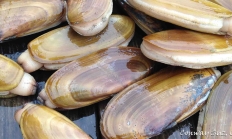Search myodfw.com
Let's go fishing! Not enough time? Think again. If you live in the greater Portland area, there are a number of places you can get to in less than an hour. Directions and times are approximate, mileage and generalized directions are from Pioneer Courthouse Square.

Let’s go fishing! not enough time? Think again. If you live in the Medford area, there are a number of places you can get to in less than an hour. Directions, mileage, and times are approximate.

Let’s go fishing! not enough time? Think again. If you live in the Roseburg area, there are a number of places you can get to in less than an hour. Directions, mileage, and times are approximate and start from the Douglas County Courthouse in Roseburg (1036 SE Douglas).
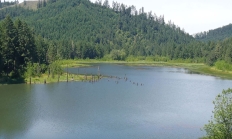
Not enough time to go fishing? Think again—if you live in the Bend, Redmond, Prineville, Sisters or LaPine areas there are a number of great fishing spots just a short drive away. Make sure you read the Oregon Sport Fishing Regulations, and why not grab a friend or family member to go with you? The times and distances listed are from Drake Park in Bend.

Lane County offers so much to explore — from coastal lakes and rivers to mountain lakes and streams. The Willamette River runs through the Eugene-Springfield metro area and is fed by three major rivers: the McKenzie, Middle Fork Willamette and Coast Fork Willamette. Florence is surrounded by large dune lakes, the Siuslaw River and Pacific Ocean. With so many places to fish, it’s no wonder Lane County is an angler’s paradise. For current regulations, call your local ODFW office or check MyODFW.com.
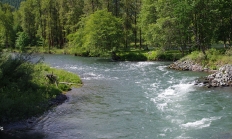
If you’re just getting started fishing, or you want to try a new kind of fishing, you’ll need a rod, reel and some tackle. To help you get started, we’ve put together some fishing outfits for trout, panfish (bluegill, crappie, pumpkin seed, sunfish), bass, steelhead, walleye, salmon and sturgeon.

More fish are probably lost because of improperly tied knots than any other single reason. Yet anglers who spend hours practicing their casting or making lures often neglect this simple fundamental. But if tying better knots might help us land more fish, it makes sense to give knot tying a little more attention.


Steelhead have been called the ultimate game fish. These elusive and challenging fish can test an angler’s patience and persistence, but the reward is hooking into a fish that is famous worldwide for its line-peeling runs and spectacular, acrobatic fight.

Bass are an increasingly popular game fish even in a state noted for its native salmon, steelhead and trout. Bass often thrive in the urban waters of places like the Willamette Valley where warmer temperatures limit trout fishing in the summer months. Whether you target them in the Columbia or Willamette rivers, a coastal lake or the neighborhood pond, throughout much of the year bass can offer a rewarding fishing opportunity relatively close to home.
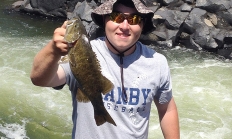
Surf fishing is one of Oregon’s most underutilized fisheries. There are hundreds of places to fish along Oregon’s sandy beaches, and there are plenty of fish within an easy cast from shore.
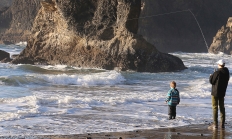
A dozen great rivers pour out of the Coast Range Mountains into tidal bays that welcome runs of salmon and the sea-going rainbow trout called “steelhead.” Bays are the year-round home to marine perch, rockfish, crabs and clams, while other species come and go with the seasons and the tides. In the Northwest Zone a handful of ponds dot the forested slopes, and there are dozens of dune lakes— many stocked with plump rainbow trout, and some that grow their own largemouth bass, perch, crappie and brown bullhead.

Salmon, steelhead and smallmouth bass offer world-class fishing here year-round. Rainbow trout are stocked in the upper Rogue and in lakes nestled in settings as varied as fir forest and wind-swept dune. Big reservoirs provide fishing for trout and for thriving populations of largemouth bass, catfish, perch and crappie. Coastal bays serve as gateways to rich offshore reef fisheries, and miles of public beach welcome anglers to fish for surfperch against a backdrop of rugged capes.

Abundant rainfall feeds the massive Willamette River watershed, tamed by a system of reservoirs stocked annually with hundreds of thousands of rainbow trout. Some of these reservoirs also grow trophy-size largemouth and smallmouth bass, and lots of bluegill, brown bullhead and crappies. Salmon and steelhead navigate the Willamette and its productive tributaries, many of which are also home to rainbow and cutthroat trout.
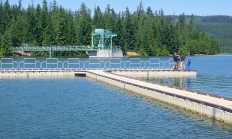
Known for its high desert climate, sage-covered canyons, glacial peaks and mountain lakes, this zone is defined by the reach of Oregon’s finest trout stream. The Deschutes River is no bigger than a creek when it passes close by South Twin Lake on its way toward Wickiup and Crane Prairie reservoirs. But it soon gains power enough to grow athletic rainbow trout. The considerably tamer Crooked River offers good practice if you’re just learning how to keep your footing in a slippery freestone stream.

Wide open spaces, wild windy places, and extreme temperatures characterize Oregon’s largest, most remote fishing zone. Scarcity makes water especially precious here, providing welcome oases in an often rugged, but spectacular landscape. Rainbow trout are native to its streams, including the Williamson, Malheur and Chewaucan rivers. And stocked rainbow and brown trout grow to trophy size in many of its lakes and reservoirs.
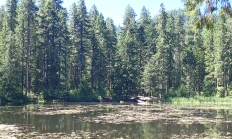
Rabbit hunting is the third most popular type of hunting activity in the U.S., behind wild turkey and deer hunting. Few people take advantage of it in Oregon, but they should—rabbits and hares are abundant and there is no closed season or bag limit. Plus, they taste good!

Oregon offers some of the best upland game bird hunting in the West. The state’s diverse habitats support nine species of upland game birds— pheasants, chukar, Hungarian partridge, valley (California) quail, mountain quail, ruffed grouse, blue grouse, sage-grouse and wild turkey. There are upland hunting opportunities in every corner of the state, and one upland bird season or another is open continuously from September 1 through January 31. Throw in a six-week spring turkey season and you can hunt upland game birds in Oregon for more than half of the year! Also, since many of the species share similar habitat

Oregon supports diverse waterfowl populations, from sea ducks in coastal saltwater to puddle ducks in the alkali basins of southeast Oregon. You might think you need lots of gear (decoys, boats, a trained dog) to hunt ducks and geese, but you don’t. All of these things are nice but not necessary. All you really need is a hunting license/tag, shotgun, shells and some basic identification skills.
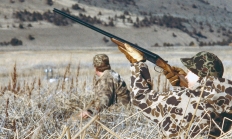
Razor clams and other bivalves are filter feeders that eat single celled plants called phytoplankton. Some species of phytoplankton manufacture biological toxins that, if ingested by bivalves, will be stored in their flesh. Though the biotoxins do not make the shellfish sick, they will make humans sick if a person consumes an affected animal.
